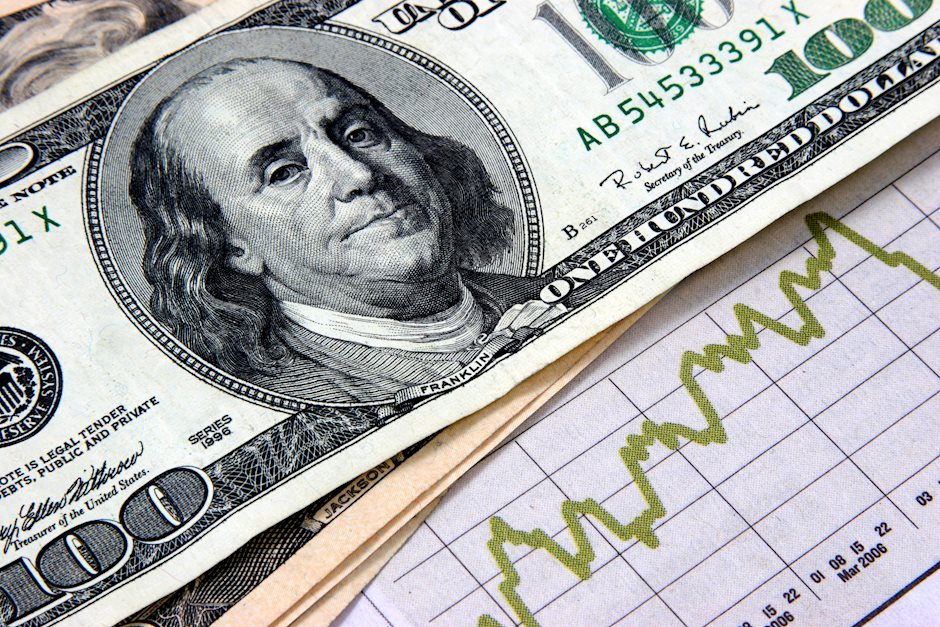US Dollar extends losses after Powell's presser
- The DXY Index declined to 102.90.
- As expected, the Fed decided to hold rates steady at the 5.25-5.50% range and confirmed that there won't be any more hikes.
- Interest rate projections were revised lower, weighing on the US yields and the Greenback.

The US Dollar declined to 102.90 after the release of the last monetary policy decision of the Fed. As expected, the bank held rates steady at 5.25-5.50%, and what is driving the currency is that the bank is expecting 75 bps of easing, higher than the last projections.
As the US economy confronts cooling inflation and a resilient labor market, the Fed was seen as cautious, not dismissing prospects of further tightening. Despite market speculation asserting a dovish orientation, the Fed still hasn’t declared victory on inflation. That being said, on the monetary policy statement, the Federal Open Market Committee (FOMC) median rate projection for 2024 suggests that the officials are seeing 3 rate cuts. This means the bank is aligning with the market expectations, which fueled risk-on flows and weakened the US Dollar.
Daily Market Movers: US Dollar plunges as Fed hints at more rate cuts
- The US Dollar is weak after the last Fed meeting of 2023 as it lost interest due to US Treasury yields falling.
- Regarding to so-called dot Plots, the median projections suggest that the bank sees three 0.25 basis point rate cuts next year.
- The 10-year bond yield declined to a 3-month yield, around 4%. The yield of the 2-year note, the most closely related to interest rate expectations, fell to 4.56%.
- Regarding Inflation projections,Fed officials see inflation at 2.4% in 2024, returning to the 2% target in 2026
- In relation to economic activity, they see weaker GDP growth and the same unemployment rate in 2024 compared with September projections.
- During its press conference, Powell commented that the Fed is aware of the risk that we could hang on too long on rates and that they are focused on not making that mistake.
Technical Analysis: DXY index outlook turns bearish and sellers get traction
Indicators on the daily chart, including the Relative Strength Index (RSI) and the Moving Average Convergence Divergence (MACD) fell into negative territory, indicating a more favorable position of the sellers. In addition, the index fell below the 20,100 and 200-day Simple Moving Averages (SMAs), confirming that the bears are now in command.
Support levels: 102.50, 102.30, 102.00.
Resistance levels: 103.50 - 103.60 (200 and 20-day SMA convergence), 104.00,104.50 (100-day SMA).
Fed FAQs
What does the Federal Reserve do, how does it impact the US Dollar?
Monetary policy in the US is shaped by the Federal Reserve (Fed). The Fed has two mandates: to achieve price stability and foster full employment. Its primary tool to achieve these goals is by adjusting interest rates.
When prices are rising too quickly and inflation is above the Fed’s 2% target, it raises interest rates, increasing borrowing costs throughout the economy. This results in a stronger US Dollar (USD) as it makes the US a more attractive place for international investors to park their money.
When inflation falls below 2% or the Unemployment Rate is too high, the Fed may lower interest rates to encourage borrowing, which weighs on the Greenback.
How often does the Fed hold monetary policy meetings?
The Federal Reserve (Fed) holds eight policy meetings a year, where the Federal Open Market Committee (FOMC) assesses economic conditions and makes monetary policy decisions.
The FOMC is attended by twelve Fed officials – the seven members of the Board of Governors, the president of the Federal Reserve Bank of New York, and four of the remaining eleven regional Reserve Bank presidents, who serve one-year terms on a rotating basis.
What is Quantitative Easing (QE) and how does it impact USD?
In extreme situations, the Federal Reserve may resort to a policy named Quantitative Easing (QE). QE is the process by which the Fed substantially increases the flow of credit in a stuck financial system.
It is a non-standard policy measure used during crises or when inflation is extremely low. It was the Fed’s weapon of choice during the Great Financial Crisis in 2008. It involves the Fed printing more Dollars and using them to buy high grade bonds from financial institutions. QE usually weakens the US Dollar.
What is Quantitative Tightening (QT) and how does it impact the US Dollar?
Quantitative tightening (QT) is the reverse process of QE, whereby the Federal Reserve stops buying bonds from financial institutions and does not reinvest the principal from the bonds it holds maturing, to purchase new bonds. It is usually positive for the value of the US Dollar.
Author

Patricio Martín
FXStreet
Patricio is an economist from Argentina passionate about global finance and understanding the daily movements of the markets.

















